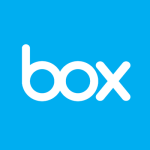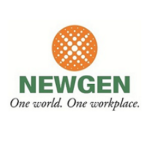
IBM FileNet Other Solutions Considered
We have used Appian, outsystems, Python, and Microsoft solutions as alternatives.
View full review »I compared IBM FileNet with OpenText. These are tools available at a high level for enterprise businesses.
View full review »BO
BolarinwaOyerinde
Managing Partner at Inception Business Concepts
Our client is trying to move away from the FileNet to Documentum and that has been difficult. The migration from FileNet to Documentum was started sometime in 2013 but, unfortunately, they have not been successful with it. I believe the vendor they used did not have enough knowledge to be able to deploy it, so they're having challenges with it.
They decided to move away from FileNet back because there was no clear direction as to where FileNet was going. They wanted to do content, and there was an option to go with FileNet P8, but they got direction from industry reviews and decided to go with Documentum because of the content functionality. Aside from that, ideally, they need to bring in workflow, as well as content searchability — full-text search. Those are some of the things they desire.
When they began with FileNet it was started as an archiving solution. That is what it was conceived for initially. But the need arose to get into content and workflow and they felt they needed a new platform.
I do believe FileNet has such capabilities. We are trying to propose to them to go for FileNet P8. Unfortunately for them, they have spent so much time trying to implement Documentum and have not made headway. They have yet to look at P8. We are the ones supporting FileNet for them. We have told them that the functionality they're looking for is available in FileNet P8. I would love to use FileNet P8 to see what it can deliver. However, whether they want to implement FileNet P8 or Documentum, the procedure is cumbersome.
I'm very familiar with Documentum. I've gone for Documentum training in Germany. But I would still go with FileNet because it delivered for me. It has been stable for many years. That is a strong point for me.
View full review »Buyer's Guide
IBM FileNet
April 2025
Learn what your peers think about IBM FileNet. Get advice and tips from experienced pros sharing their opinions. Updated: April 2025.
849,190 professionals have used our research since 2012.
We considered other vendors. There are two factors for us. We have so many documents, billions of documents. Performance is one of the hot topics; fitting into our environment, fitting into our architecture because our architecture is generally based on WebSphere. Also, it was easy to integrate with FileNet Image Services. These were our major concerns. On top of that, high availability is a really important feature for us. These were the reasons we chose FileNet P8.
The decision-making process took more than 3-4 months because we did all the PoCs. We did a stress test; we set up a small environment. It took more than 3-4 months.
We also considered building the whole solution in-house, and we are doing it for some type of documents; non-critical, but agile documents. Performance is the first concern for that. We are only using disk storage, and then a single interface before the storage. Without any sub-tiers, we can directly reach the document, but there are some concerns about security, backup, and high availability.
We are not considering replacing FileNet P8, but using that for different use cases.
The most important criteria for me when selecting a vendor to work with are adapting new technologies, and being the leader. IBM is the leader in this area.
View full review »I have not evaluated any other alternatives similar to IBM FileNet yet.
View full review »The problem is that the competitors' products have, in most areas, a contract with an ERP system. We now have three customers who are migrating to new ERP systems and they all have contracts with a document management solution. They bring it in with a fixed price and give them a whole document integration path.
We have one customer who, for many years, used IBM Content Manager, and now he's migrating to a new ERP system and he's throwing out the old solution because, with the new ERP system, he has document management out-of-the-box with the licensing cost. This customer has no experience with the new document management system. Nothing. The ERP seller sold him the D3 DMS system and now we have lost that content management installation.
In terms of decision-making, the problem is that most customers have IT people making the decision about which product to use and they do not have really the experience. When customers come to us, they often come in with a prepared offer from someone else with a vested interest.
This is happening more or more and it is not good. In the past, it was up to the market to have a good but independent product with interfaces to all application areas. With this new scenario, it's the IT managers, who do not have much experience — they come from university from which they only have technical knowledge — and they say: "Okay, I have one supplier who is providing me one solution. I have an all-in service contract and I don't need to take care of the solution on a technical level." That is bad for independent solutions like FileNet.
View full review »There are multiple vendors like OpenText, M-Files, and SharePoint. Our clients have found that FileNet is, overall, a better solution.
View full review »I’m involved in the decision process to continue making upgrades, absolutely. In fact, it's a very small team of very dedicated and focused folks who have all been with the firm for approximately 20 years like me. We don't have turnover and we don't want turnover in our product line.
From time to time, we do explore options. We looked at EMC's Documentum product, for example. We found that the migration to it was going to be as painful if not more painful as the migration onto FileNet P8, and was going to have the added detrimental aspect of bringing in an entirely new relationship. We were not confident, honestly, that the product line was going to survive for the long term.
When I’m selecting a vendor to work with, I need one with vision that is going to be able to stay with the course over the period as long as a decade. Things do not move necessarily at the speed of light. We need to know that a product line that we spend a year or two or three migrating onto, is going to be consistently available and enhanced over the next decade.
I'm not convinced that migrations can ever be made easy. I think migrations are a pill; you swallow it, it works its way through your plumbing and it comes out the other end. There are various times in the process when it hurts.
As far as building a solution in-house, I'm not sure that an enterprise content management solution is the kind of thing that is buildable in-house, though there are some who are perhaps arrogant enough to think that they can pull that off.
View full review »None that I am aware of.
View full review »I was not involved in any comparison to any other system. I don't know exactly what was done. I'm a lowly developer. I can't really compare the FileNet P8 system against any of its competitors.
When I’m selecting a vendor to work with, the most important criteria for me are: that they're going to exist in the future; their product is good; and their documentation is good. I like to be able to go out, find the documentation, and have it be nicely organized; I can find what I want; I can read about what I need to read about and do a deep dive into the nitty gritty details.
View full review »There was Documentum, and we still have a limited Documentum installation. There really weren't many others in the running.
One of the reasons we eventually chose the IBM solution was the peer reviews, as well as from Gartner, industry reviews; peer reviews from other, not necessarily banking customers, but other customers in our area. They have FileNet P8 installations and have had good experience with that.
We encountered these reviews by word-of-mouth, associations, networking with these other companies; that proved very beneficial to us. A good recommendation from somebody that's already using the product is worth a lot.
The decision-making process lasted a number of months, not years. One of the factors that expedited that process were the good reviews or good experiences by others that proved to be helpful to us.
In general, the most important criteria for me when selecting a vendor to work with are reliability and the customer service being able to respond to our requests. That's important. Then, we don't like to be on the leading edge of technology, but certainly have the capability to stay current with changes, the technology. We've seen that with the HTML5 viewer that was incorporated into Navigator. We went to that immediately, as soon as it was available.
View full review »I didn’t look at other vendors, because I was already here. But I would look at FileNet and Documentum. I would look at a wide range of content management solutions, and then we just narrow it down from there.
We chose IBM because we have a longstanding relationship with them, and we're trying to buy an integrated stack. So, instead of buying just an ECM solution, we're looking at content ingestion, content management, and content generation. The stack, and not just the one off solution.
When selecting a vendor, my most important criteria are the solution, the technical support, the thought leadership, and cost.
View full review »VO
VeyselOzdemir
Managing Director at Ictnet Limited
I also know SharePoint and Documentum. When I looked into them, Documentum was harder to use than FileNet and more expensive. Implementing and integrating Documentum was much harder than with FileNet. I'm not sure how it stacks up now. SharePoint was not robust or sustainable, in my opinion. FileNet is much better than SharePoint in those areas.
View full review »There were a lot of other vendors trying to overtake it, like Hyland, for more than 15 to 20 years. FileNet has had the same platform which is stable, but it is very compatible with our requirements. It supports OS, Linux, Oracle and digital, making it more flexible than most products on the market.
View full review »They do have SharePoint for a few applications, but that doesn't really solve what the business needs. IBM FileNet is the right solution and we are currently using it. We'll be adding more features and more products into it to make it better for our customers.
We also have custom developments on top of FileNet.
The decision-making process takes about 6 months. We have a process to be followed. It takes a minimum of about 6 months to go through all the approvals; the business as well as our directors have to approve it.
The most important criteria for me when selecting a vendor to work with is most likely the complexity. When there's any kind of situation with any architecture being introduced, that's when we need to have IBM or anyone to be involved directly to help us out.
View full review »I have used other products as well. However, stability-wise, I am more comfortable using this product.
View full review »We looked at Ricoh and ParaDM. We chose IBM FileNet because of the brand name.
View full review »They evaluated Documentum, they evaluated FileNet, they evaluated a few other tools. The company actually bought FileNet before IBM bought FileNet, so we had a contract with FileNet and then IBM came in and bought it. That was a good thing because of the innovation that IBM did bring to the platform. We were also a heavy C|MAN user and the content management on-demand system integrates well with FileNet too. With the new Content Navigator, it allowed for one pane of glass. So what IBM is doing in that area is just going to keep getting better.
View full review »When we decided to invest in the upgrade, no one else was considered, to my knowledge, because we were already on that path and we saw a lot of benefit to upgrading. It was a natural step to upgrade.
In general, the most important criteria for me when selecting a vendor to work with are stability and excellent support. When something breaks for us, it affects thousands of users. It can cost us thousands of dollars and man hours. Since no product is fool proof, excellent support is an absolute must.
View full review »We reviewed different vendors that we had worked with. Our organization is quite large, so we had multiple, different types of products where we are. Everything was analyzed, and we came to the decision to move on with FileNet. I think it has to do with the supportability. With our organization being large and IBM being large, they are able to support the types of volumes and types of challenges that we have. That played a lot into it, along with the fact that we do have some other IBM products already. That worked out well.
The most important criteria for me when selecting a vendor to work with is having that ability to contact them easily and communicate our challenges because you always have to have that open dialogue and collaborate and understand our challenges so they can suggest improvements for us. There might be something we have to change as a client of IBM but we have to have that collaboration in there so that we can get that done.
It was probably a year-long decision-making process, to fully go through it, because of the size of our environment. One of the key factors to actually move forward was the fact that IBM was able to change some of their connectors that work with our environment. If that wouldn't have happened, it might have been a different decision. Knowing that they were able to make some adjustments to the product; that helped.
In the content management space, we probably did not think too much about building a solution in house. That’s not something that we would typically do in our environment. If there is a product that does it, we tend to lean towards the product.
View full review »We considered solutions other than FileNet, but I don't remember which ones. We had three proposals at the time. We chose FileNet because of the integration, the brand name and the way that the brand would support us in the future. Then, IBM made it better.
The decision-making process took 10 months. The price was higher than we thought they would be. We did not consider building a solution on our own.
The most important criteria for me when selecting a vendor to work with is the brand support; the way that they can improve the product in the future and work with you with those solutions.
View full review »SP
Sanjay Petkar
Dy General Manager (IT) at a government with 1,001-5,000 employees
We are now looking at another DMS which will have a better look and feel and be easier to operate.
View full review »MA
Vp33e4
VP at a financial services firm with 10,001+ employees
We did a PoC. We tried multiple vendors and compared them on different aspects. Based on the simplicity, ease, convenience, and many aspects of this solution, we made the decision in the past to work with it. We plan on continuing doing so in future.
View full review »SS
Suren Shiva
Software Architect at Deloitte
We work with the competitors, as well. While the solution is good, it needs to catch up to the average.
View full review »We had an external consultant group that was coming in to do a significant amount of work for us. They were bringing in new technologies and they were the deciders of bringing in FileNet.
Nonetheless, when I select a vendor to work with, cost is very important and a level of expertise in a similar type of industry is helpful, peer experiences. If they've worked with a company that is similar to ours, it seems like there is faster ramp-up time for them.
When we started with FileNet, they were pretty much it. The alternatives were not serious. We looked at using just file systems with PDFs, etc. FileNet was the best solution.
View full review »I was involved in the decision-making process.
View full review »DO
DavidOrtega
SAE - Services Account Executive at RICOH
In our company, we have three different tools for documents services. One of them is FileNet, another is Laserfiche, and there is a third one. But our company has an agreement with IBM where there is flexibility on pricing.
One of the main differences between IBM and its competitors is the pricing. In this market, IBM is the most expensive platform. But IBM has a lot of components in one package. We can use this advantage to offer just one package with all these components. With the competitors, we may need to combine technologies. Sometimes customers feel that having a lot of different vendors for one solution makes things hard to maintain. With IBM, we have just one platform with multiple components, making it a very good solution in terms of maintenance.
Support is also important after the initial implementation. That's one of the differences between IBM and its competitors
View full review »If you are planning on managing records, go with a OpenText, FileNet, or Documentum. A lot of times companies go with SharePoint as a default, but there are some pain points around worker's management in SharePoint.
View full review »Some of our customers are IBM shops and work with IBM exclusively, but there are also customers who look at other solutions.
View full review »We looked at multiple vendors: Perceptive, Hyland, and Dell EMC.
View full review »We evaluated Alfresco. It offers a community edition free of charge.
View full review »I didn't do a deep comparison. Previously, I compared FileNet with some open-source enterprise content systems, especially Alfresco, but I realized that this product is for a different type of customer. FileNet is for enterprise customers, but Alfresco and other open-source BPM products are for small or medium-sized customers.
In terms of a comparison of the features, the open-source solutions are really are missing a lot.
View full review »There were no other vendors on my shortlist.
View full review »I was not part of the evaluation process.
View full review »We were checking out other vendors. We were looking at Oracle, Microsoft and some smaller vendors that were developing some specific things for us.
When I'm selecting a vendor, I look for a vendor that you can trust, with whom you can have a long-term relationship, and you know that they are also on top of the technological wave. What you are going to implement is going to be constantly changing with new developments in the future.
View full review »We started with considering doing a peer, mobile-first type application. Obviously, from a mobility perspective that's great, but you need a lot more heft from data storage and otherwise.
View full review »We have also looked at Documentum, OpenText, and SharePoint.
View full review »I was not involved in the decision-making process.
View full review »If you check the industry rankings, you can see that FileNet was the leader in the ACM category for four years in a row. Only in 2017 do you see that Microsoft SharePoint was the leader. I think that's because IBM doesn't offer new technologies every year, they offer new technologies after five years, for each release of the product.
View full review »We evaluated a few other products
View full review »Buyer's Guide
IBM FileNet
April 2025
Learn what your peers think about IBM FileNet. Get advice and tips from experienced pros sharing their opinions. Updated: April 2025.
849,190 professionals have used our research since 2012.














